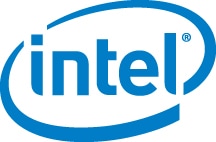July 24, 2019
3 Benefits That Show the Business Value of Device as a Service Personas
Organizations employing DaaS can no longer take a one-size-fits-all approach to device deployments.

A year ago, CDW published a blog post that outlined four key tips for developing Device as a Service (DaaS) personas. But since then, I’ve realized that we may need to take this conversation back a step. In my discussions with customers, very few have progressed to the point of actively developing personas. In fact, I’ve found that many are still questioning why they need user personas in the first place — or haven’t really considered the question at all.
With the rapid pace of change in IT, it’s understandable why some technology and business leaders might be skeptical of this trend, or think that personas will turn out to be more of a buzzword than a business enabler.
If they think that, they’re wrong. User personas not only are here to stay, but also are going to form the underpinnings of enterprise device strategies in the coming years — and they have the potential to begin delivering real business benefits today.
Here are some of the biggest.
1. Reduced Waste
Even if you want to treat every user in your organization as equal, you can’t treat them the same — at least from a device standpoint. If you do, you’ll introduce massive waste into your IT environment.
Users in human resources and customer service, for example, likely don’t need machines that are as powerful as those used by the sales team. Likewise, contact center employees can probably be moved to thin clients, which could yield significant cost savings. If everybody gets the same laptop, some workers are going to have too much computing power for their jobs, and some aren’t going to have enough. User personas are necessary to pinpoint which devices will help which employees to do their jobs and provide value to the organization, and which are simply a waste of resources.
2. Improved Security Policies
Enabling unfettered access to mission-critical data creates unnecessary risk. By setting security policies according to user role, organizations can more effectively keep data safe while also providing access to the employees and executives who need it.
3. Optimized Use of Windows 10
This blog post brought to you by:

